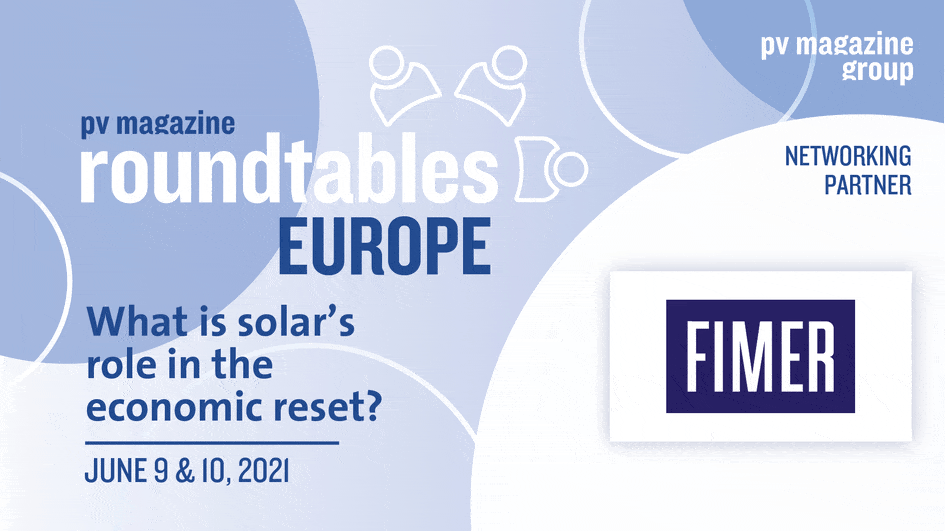
Thank you - and back tomorrow!
Thank you for joining us for day 1 of this year's virtual pv magazine Roundtable.
Tomorrow it all happens again, and we welcome you to join the pv magazine editors live from Berlin, and the over 2,500 registrants for this year's virtual pv magazine Roundtable Europe event, on day two, with our Cornerstones 3 and 4!
Once again, for those arriving early, you can participate in our English and German-speaking networking sessions, which run from 9-10 CEST.
Register for the Roundtables for free. Already signed up? Access the pv magazine Roundtables Europe event platform.
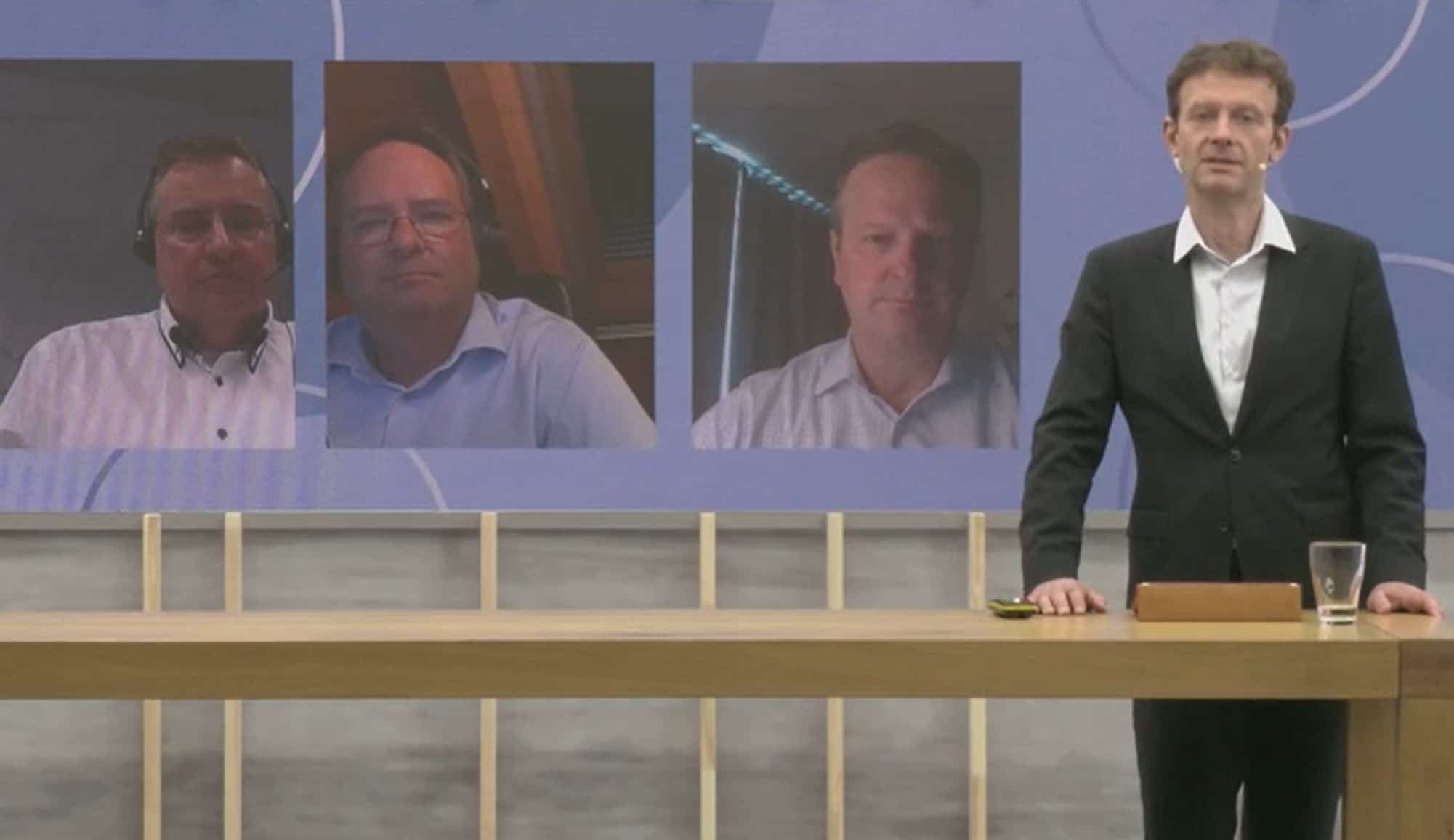
Panel discussion: Europe's aging PV-fleet
Jörn Hackbarth, Global Head Engineering & Construction, Sonnedix, Michael Heidenreich, Senior Sales Manager Projects, GoodWe, and Rouven Lenhart, Executive Vice President Sales & Marketing, meteocontrol joined a panel discussion on Europe's aging PV-fleet, and the challenges arising from upgrading, maintaining and revamping.
In terms of outcomes, metrics for success were discussed: the question being is more power output, longer lifetime, or lower rates of failures and higher availability, and so on.
One question posed was why revamping may not be possible or preferable in some cases.
Other elements discussed included changing inverter technologies, how strategies for revamping are more becoming coherent, and how well it translates to higher IRR. Jörn Hackbarth discussed regulatory and law changes impacting decisions, along with technical challenges, where one replacement part means upgrading other elements, with a growing chain of upgrades that show technical problems.
Inverter replacement and repowering
George Schulz, Vice President of Clean Energy, Ariel Re, examined inverter replacement for older equipment from the perspective of insurance. Replacing like-for-like is not always possible, and neither is insurance a given for limited strategic approaches.
Schulz detailed a guide to risks for “RePowering Plants” for insurers. With repowering investments, some operators can target a 10-15% increase on 20-year IRR, and as much as 40% in installed power.
In a generic case with some specifics confidential, to repower a 10MW plant. This strategy was via replacing 275W modules to 400W Tier 1 modules, and replace obsolete inverters. Ariel Re provided underwriting on the basis of detailed repowering strategy.
Michael Heidenreich, Senior Sales Manager Projects, from GoodWe, further detailed approaches to revamps, including trying to answer the old adage: “Never change a running system.” Inverter changes must be closely considered, along with modules, cabling of both AC and DC, and much more.
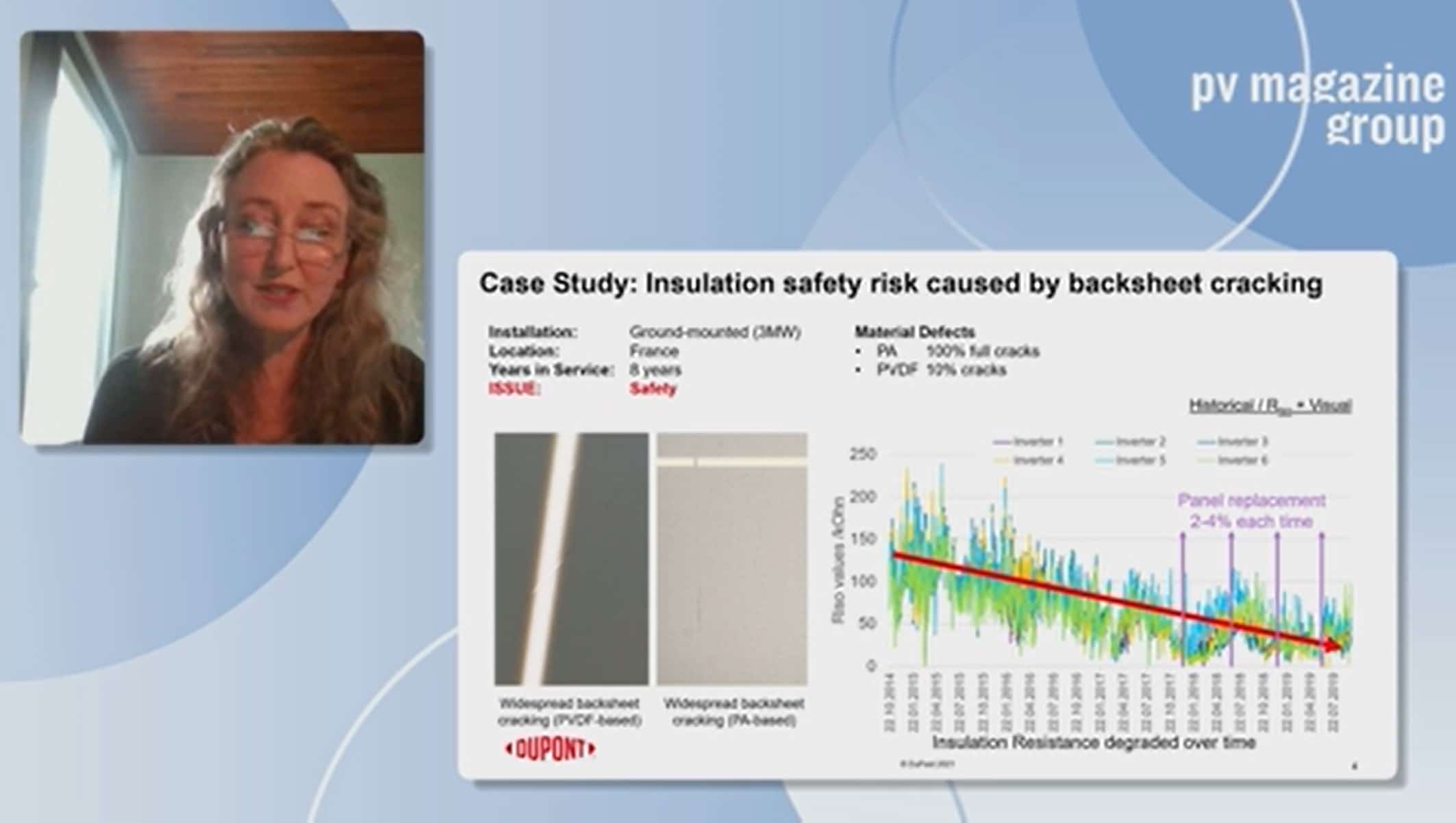
Another old foe: chalking, cracking, repair vs replace
Steven Xuereb, Director of Sales and Project Delivery, PI Berlin, along with assessments of backsheet failures Lucie Garreau, EMEA technical Program Manager, from DuPont tackled old asset issues.
Steven Xuereb presented two case studies on backsheet degradation.
The first case study focused on backsheet chalking and cracks in a 10MW plant in Spain, with warranty remaining. 100% of modules experienced chalking, with around 1% experiencing backsheet cracking. In a negotiated claim between plant owner and supplier, PI Berlin assisted the owner in checking a suggested option for an on-sight repair of some 1,000 modules. PI Berlin recommended rejecting this offer, and seek replacement modules, despite higher costs, due to repair process concerns.
In the second case presented by PI Berlin, a 20MW Italian project was without warranty, but only some 25% of panels had backsheet chalking, but not backsheet cracking.
PI Berlin examined the causes for chalking, and via tensile strength testing, classified high, medium, and low-risk backsheet cracking for the modules concerned. 72% were in the medium-risk class for cracking, 28% low-risk, and 0% at high-risk. This allowed the operator to reserve monies for the replacement.
Lucie Garreau from DuPont detailed that the material used in the backsheet determines the likelihood of cracking. Garreau passed on a global reliability study, showing 16% of all panels show backsheet degradation. Two-thirds are linked to cracking.
Repair advantages were also discussed. Further information, including a French case study where modules were gradually replaced, before a complete replacement was negotiated, was presented. However, repairs make sense for the majority of panels, where even cracking may not affect water ingress. And, replacements may not produce the same current as the existing panels.
DuPont's approach is to tip the balance towards repair over replacement, to fix backsheets. And with the problem expected to be 5-6GW of panels each year, or around 1% of installed capacity, which is set to grow each year. Repair must be considered for a sustainable industry to be sustainable.
In response, Steven Xuereb agreed that repair can make sense, within quality assurance checks and balances, depending on the warranty situation for modules.
The pair debated repair and replacements with questions from the audience.
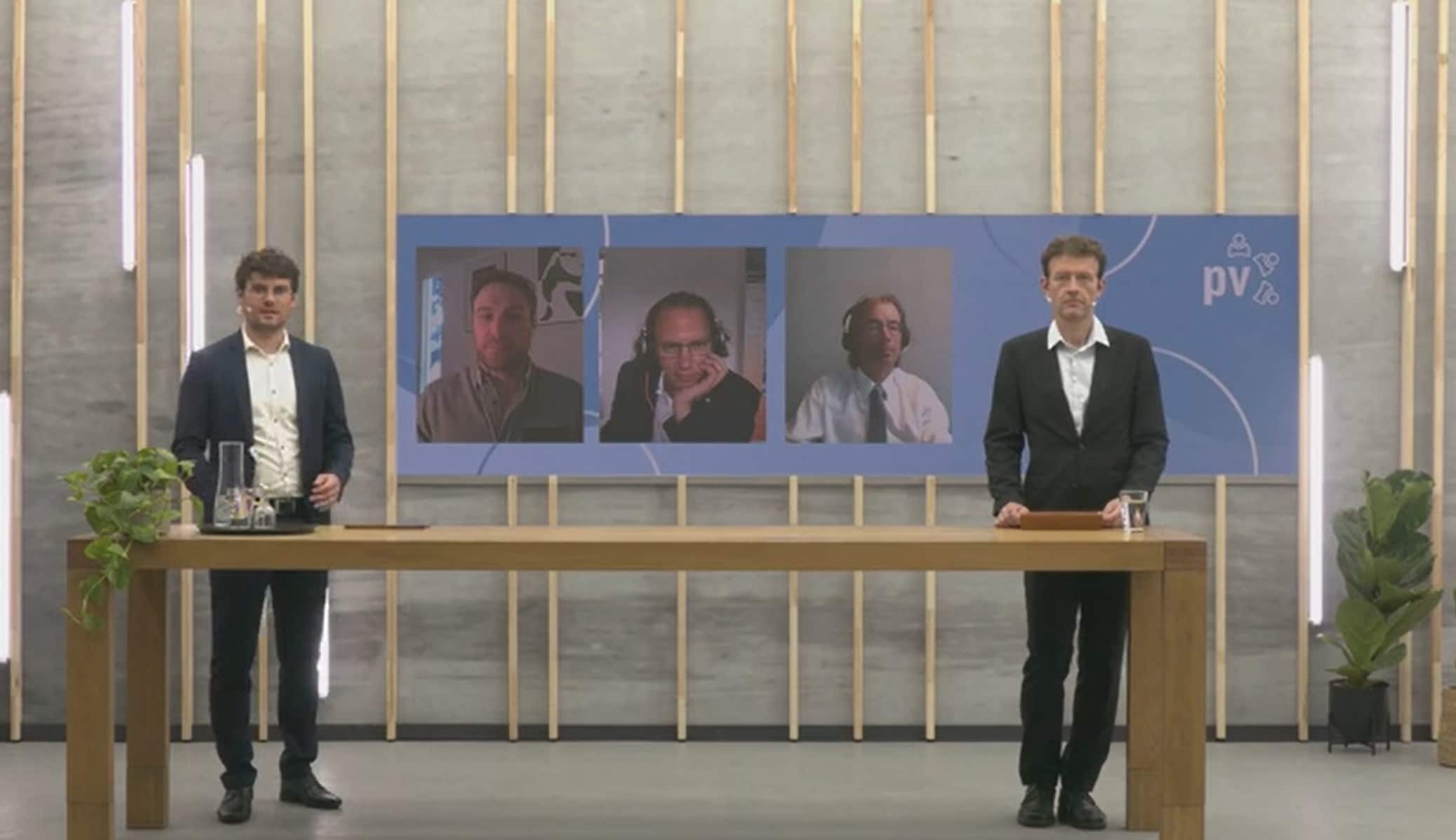
Fireside chat: single axis trackers
Alex Roedel, Senior Director of Design and Engineering, Nextracker,
Markus Balz, Managing Director, from sbp sonne, and Gerhard Weinrebe, Director, also from sbp sonne, joined the stage for a fireside chat around due diligence with commissioning, starting with single-axis tracking.
The chat commenced around the previous issues with single-axis tracking, with the question asked if the issues are resolved, and how wind speeds, extreme winds, and wind loads, are calculated.
As the market is adapting to larger solar modules and their challenges, and the panel, led by thoughts from Alex Roedel, agreed that in extreme areas, new challenges are emerging.
In terms of adjusting designs for the future, the tracker market remains young. Markus Balz pointed out that implementing a code would be too early, and therefore safety criteria and specifications and RFQs need to be discussed between parties. However, overcompensating on the side of too much safety may make a project uncompetitive.
Alex Roedel emphasized, in response to questions about how price pressures, that low LCOE is the headline feature, but long-term operational uptime is the goal for all players. Hence, a race to the bottom on pricing shouldn't be the single focus for the industry.
In response to a final question, the panel agreed that while smaller modules may, right now, be less risky, large modules will be the future for many reasons, including overall costs.
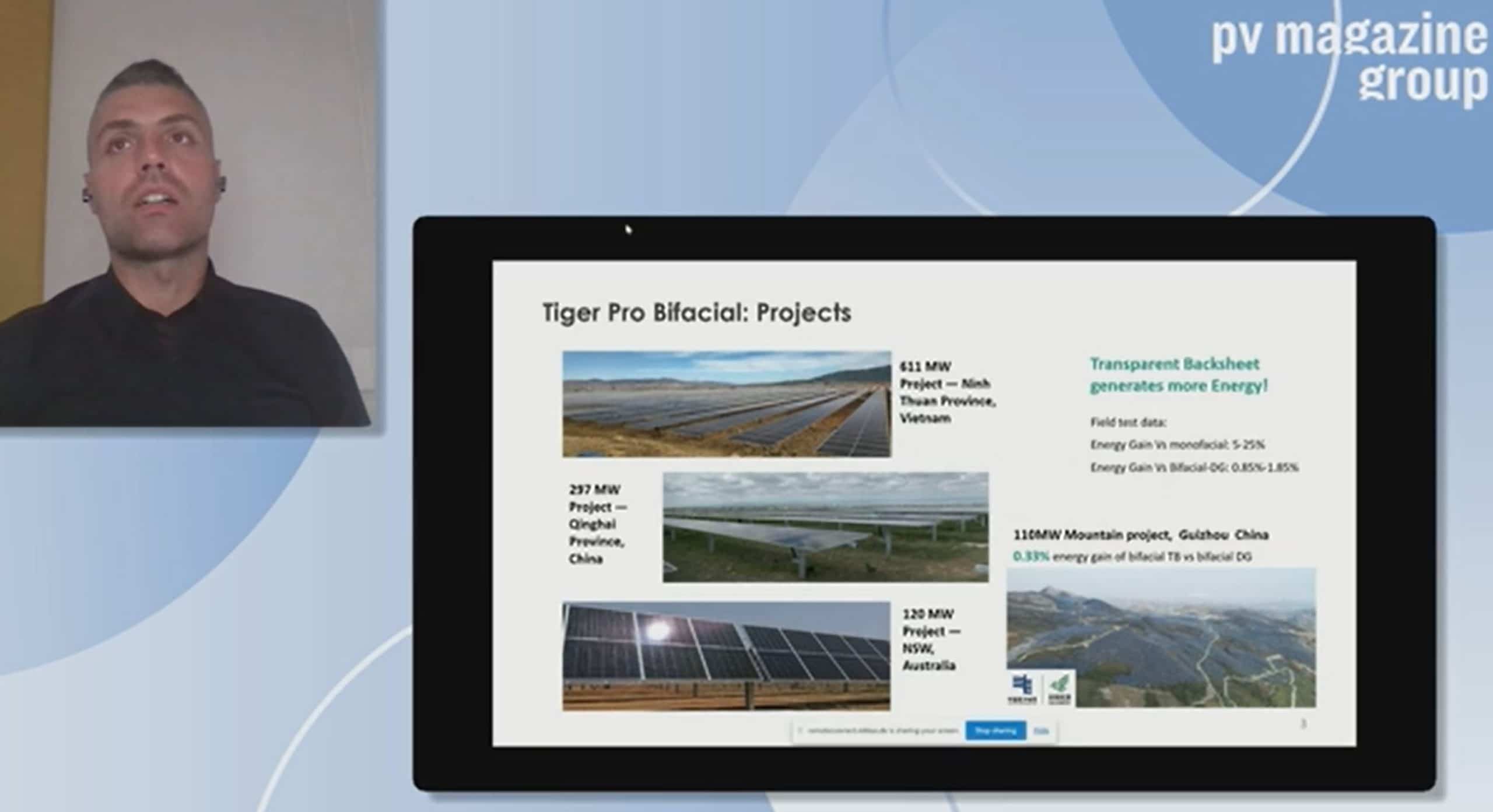
Europe's largest bifacial array
Roberto Murgioni, Head of Technical Service & Product Management, JinkoSolar EU, presented insights into Europe's largest bifacial array and its performance guarantee.
JinkSolar supplied 204MW of its Swan bifacial modules for the Kozani project in Greece.
Murgioni first introduced the growing market trend of bifacial arrays, as a higher percentage of modules shift towards bifacial types, with technologies detailed.
Speaking specifically about the Kozani project, Murgioni discussed bifacial usage, detailing usage of real and modeled data with internal simulations, along with engaging an external third-party laboratory, to provide assurances of energy generation with the technology.
Further questions of bifacial module use, guarantees of efficiency, and how albedo and irradiance measurements and third-party expertise were all used on the Kovani project, were discussed.
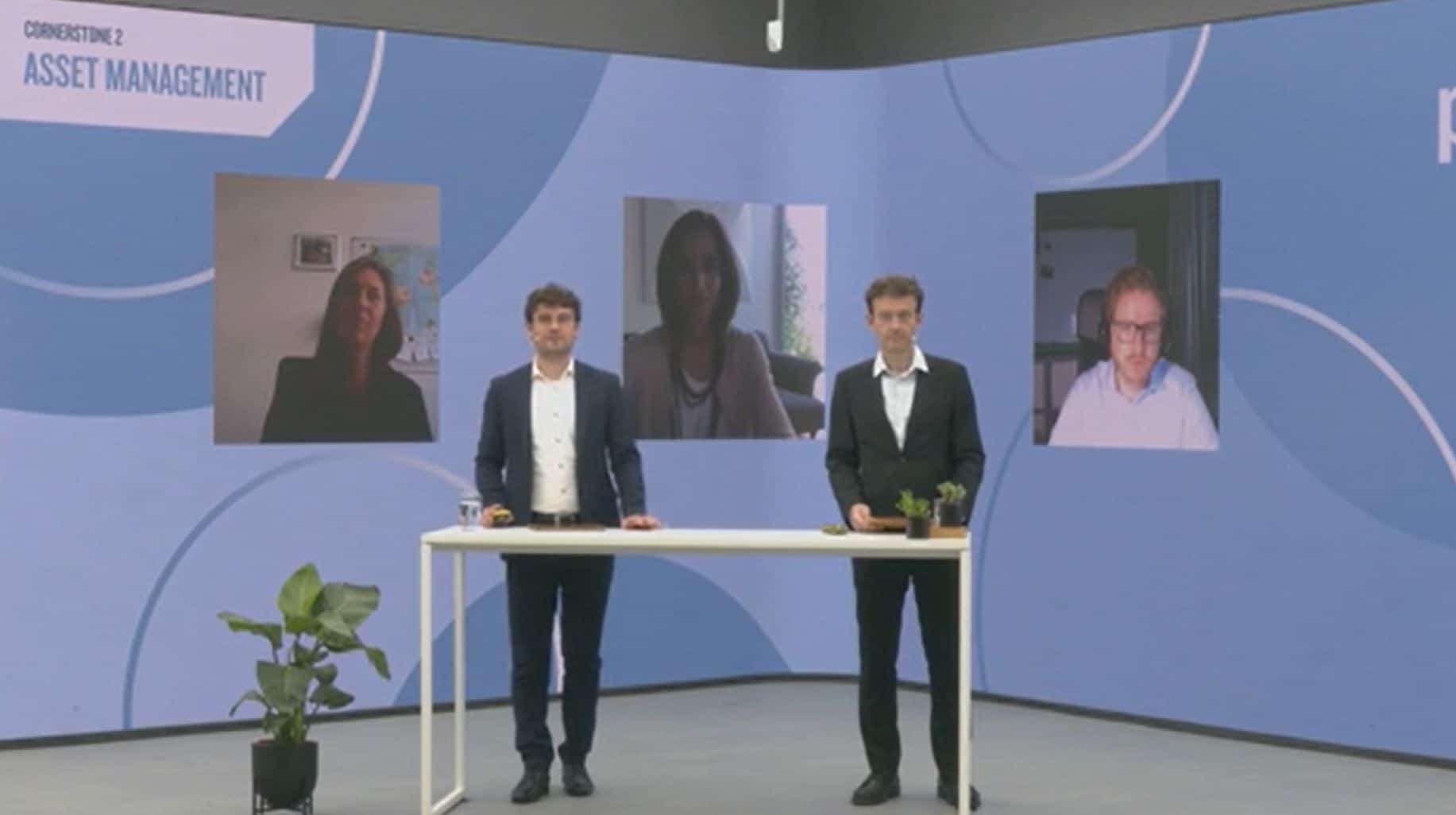
Panel Discussion commences
Carsten Auel from Deloitte, Giulia Guidi from NextEnergy Capital, and Tanja Van den Wouwer from Encavis, joined a panel discussion to continue discussing the regulations and where new opportunities might be found.
The panelists discussed compliance and regulations for investors, across the EU and wider zones, along with EPCs, developers, O&M providers, and the full supply chain.
The idea that “not caring is not an option,” for those not interested in detailed accountability steps, simply isn't valid, and demand may fall for less rigorous projects.
How can a solar project not be sustainable?
Carsten Auel from Deloitte explored the EU Taxonomy Regulations, the backbone of the classification of sustainable activities and financing.
In the move from green energy to sustainable energy, the EU Taxonomy Assessment ensures new solar projects are making a substantial contribution to environmental objectives without creating issues for any other objectives, and not creating harm via labor concerns or violations of human rights.
In a fast-moving presentation, Auel also detailed financing of sustainable projects must also go through a rigorous disclosure process.
Like what you see?
If you're enjoying this year's pv magazine Roundtables Europe, make sure you watch out for our upcoming events. From October 27-28, we will be going online Down Under for All Energy Australia, while in the US, we are planning another virtual Roundtable this year.
More details on both events will be released soon! Until then, it's back to the studio in Berlin. Enjoy!
Back live: Asset Management begins
We're back for this afternoon's Asset Management session, with this pv magazine Roundtables Europe moving on to Due diligence: Financial, contractual and technical perspectives of an evolving industry, starting at 2pm CEST.
Things will be starting at any moment, with Marian Willuhn and Michael Fuhs your hosts and moderators across the afternoon.
First up after the break and welcome will be Carsten Auel from Deloitte, on the topic Europe's new rulebook on sustainability.
Morning Recap
Thank you for joining this morning’s session, During the presentations, our experts revealed some of the key quality concerns in manufacturing as modules move up to larger formats.
These include:
- Performance in low irradiance conditions
- De-soldering
- Mechanical stress – thinner glass and increased risk of cell cracking
- Increased measurement uncertainty, particularly at the edges of the module.
In most cases, manufacturers have strategies in place to address these issues on the production line, and minimize the risk of performance loss later on in the field – but as these new large modules roll out to the field, a close eye on manufacturing quality needs to be maintained.
The impacts of new, larger, module designs go far beyond module production, as we heard in the days first panel discussion addressing implications across system design and components beyond to module itself. And of course, when it comes to quality in solar it’s not just the latest technologies stakeholders need to be aware – as is made clear in our case study.
The presentations from all of this morning’s sessions will be available on our website shortly, and please do join us for this afternoon’s session, as the roundtable moves on to sustainable practices, due diligence and performance guarantees, and revamping/replacement of system components.
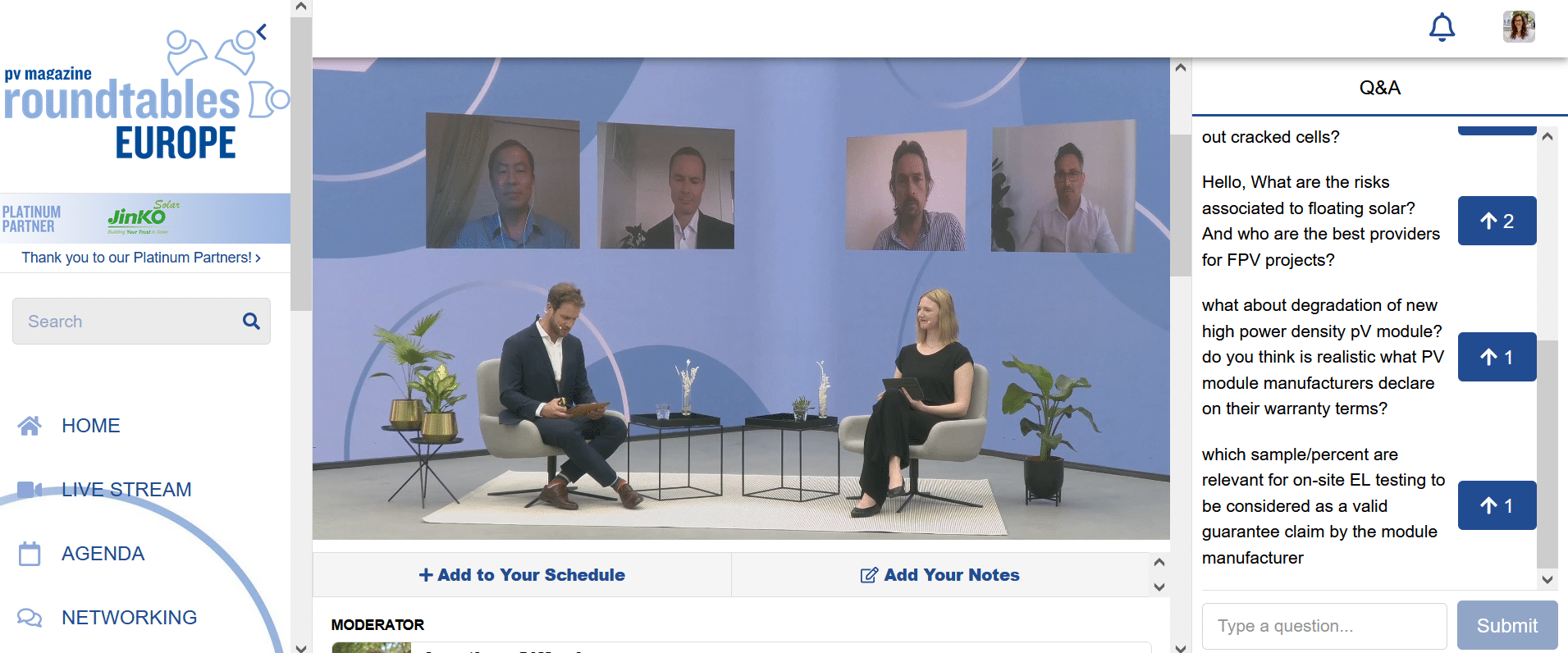
Networking and Meet the Speakers
Our first Cornerstone on quality is drawing to a close. It is fantastic to see such an international spread of attendees from across the world joining the discussion.
Despite a small technical hiccup, we have heard from a range of experts on large PV module formats and the associated quality risks with this new solar technology. All presentations and a recording of the discussions will be available online soon.
If you have any burning questions to ask our speakers, make sure you join the Meet the Speaker session between 12-1 CEST.
We will also be running a series of different networking sessions in English, Spanish, German and French during this hour, before the second cornerstone on asset management kicks off!
Access the pv magazine Roundtables Europe event platform.

Ready for the kickoff
Make sure you join the pv magazine editors live from Berlin, and the over 2,500 registrants for this year's virtual pv magazine Roundtable Europe event, which kicks off in just over one hour! If you are already up and about, you can participate in our English and German speaking networking sessions, which run from 9-10 CEST.
Register for the Roundtables for free. Already signed up? Access the pv magazine Roundtables Europe event platform.
Cornerstone 1
Between 10 and 12 CEST, you will hear from 12 experts on maintaining quality alongside rapid technological development. The emergence and deployment of large-format and high-powered modules will be discussed, with a focus on quality concerns including crystalline defects in larger wafers, cell cutting processes and spacing that can result in cracking, an increase in defects as a result of cell currents, lamination defects due to process changes, and the alignment of multi-busbars.
Methods for effective risk management will also be addressed, including questions about the number of players involved in the distribution of risk. The session will further focus on ways to effectively designate the roles of banks, insurance providers, EPCs, manufacturers, and investors.
In between the sessions, you are invited to our Networking and Meet the Speaker sessions, between 12 and 1 CEST.
Cornerstone 2
At 2 CEST, our second session on Due diligence: Financial, contractual and technical perspectives of an evolving PV industry will commence. You will hear from another panel of 12 experts discussing questions like, are solar projects always a sustainable investment class? How can buyers be certain an asset is a lucrative investment? And how can project developers fulfill the requirements set by asset managers?
This cornerstone will bring together stakeholders that deal with PV projects from a financial, legal, and technical perspective.
Watch out for live coverage from the sessions as they happen!
